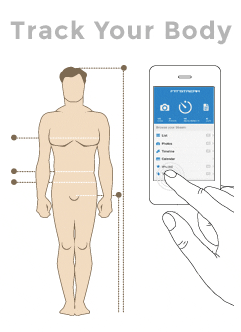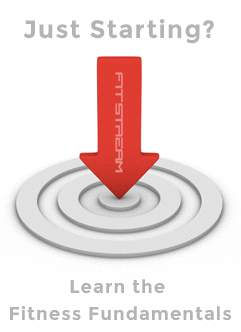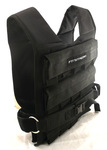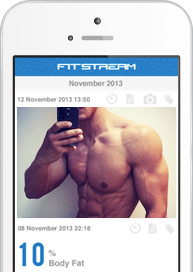This article explores a fraction of the almost limitless uses of resistance bands in physical fitness and rehabilitation training and exercises.
Resistance bands are predominantly used for three main fitness applications -
- Adding resistance to exercises
- Bodyweight assistance (developing strength for difficult exercises)
- Stretching & rehabilitation
Resistance training using bands
Resistance bands are a popular means of adding resistance to exercises as a form of strength training.
Due to the the effects of physics (see lever), various movements require more force input at different points along the path of motion. This is why a full range handstand push-up (shoulders to platform), is far more difficult than a partial range handstand push-up (HSPU).
In addition to this, an elastic band will apply more force the further it is stretched (see Hooke's Law).
A combination of these two effects gives us accommodating resistance (AR) during fitness training, as recommended by Louis Simmons, Charles Poliquin and many other excellent coaches.
We will illustrate two examples of fitness training in which bands are used as a resistance tool to enhance performance -
- Weight training with bands
- Martial arts training with bands
Weight training with resistance bands
As a specific example of how bands are useful equipment for weight training - the observation of high intensity squats reveals that the entirety of the lift is relatively easy (hence the fast movement, save for the sticking point (typically when one bone is exactly horizontal, however in this case, just above due to the momentum given by the bounce)). Therefore, the remainder of the movement is not as difficult as it could be, negating possible strength / hypertrophy gains throughout the range of motion (ROM).
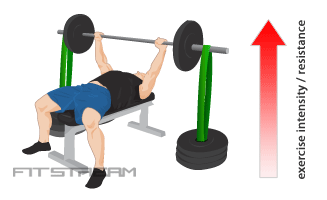 The solution? Throw some resistance bands or chains over your bar or shoulders for any exercise that is more difficult at the bottom of the movement than the top.
The solution? Throw some resistance bands or chains over your bar or shoulders for any exercise that is more difficult at the bottom of the movement than the top.
This includes popular exercises such as;
- squats,
- deadlifts,
- bench presses,
- push presses,
- push-ups,
- bicep curls,
- external rotations,
- dips,
- glute-ham raise (GHR’s) and many more.
There are also considerable gains in speed achieved through Accomodating Resistance, as the deceleration at the top of a movement is due to the increased force acting on the muscles, and not simply due to lower force output by the muscles themselves.
Martial arts training using resistance bands
Martial arts training also has much to benefit from the use of resistance bands.
Using Accommodating Resistance teaches athletes to accelerate throughout a movement (Jones et al. The Effects of Compensatory Acceleration on Upper Body Strength and Power. J. Strength and Cond. Res. 10(4): 287, 1996.), therefore strikes should become faster and harder if strength and conditioning is done with some AR.
Here are three specific examples of resistance bands used during martial arts training -
- Striking drills can be performed with lighter bands fastened behind the athlete’s shoulders.
- Habitual wide stance can be easily untaught by strapping the feet together (of course, not whilst kicking, though the results may be comic).
- Excessive distance between sparring partners is a common issue that is easily countered by fastening the pair together by the waist with a large band; round times may require adjusting, depending on fitness of the athletes and sadism of the coach. Also special consideration should be given to appropriately matching sparring partners, due to the increased rate of exchange.
Assistance training with resistance bands
Resistance bands can be a useful bodyweight assistance tool when try to develop the requisite strength for more advanced movements.
In particular, certain calisthenics exercises can be difficult to learn, with seemingly impossible jumps in strength required between progression exercises.
The image below, illustrates the use of resistance bands in order to develop strength for a Front Lever hold on gymnastics rings.

Essentially, the bands are anchored to a stable point and used to support some of your bodyweight to make exercises more achievable and overcome sticking points.
Here are two example bodyweight exercises that are often used with resistance bands -
Assisted pull-ups using bands
Pull-ups are often developed with the assistance of bands for beginners as the band supports some of the bodyweight ensuring a lighter load.
However it's worth noting that the Accommodating Resistance principle isn't as effective for pull-ups training as it is for weight training as the most assistance offered by a band during a pull-up is in the lowered phase (when the band is stretched to it's furthest point) and pull-ups get progressively more difficult at the top of the exercise (which is where the most assistance is required).
This is true of any exercise that is more difficult at the top (e.g. rows) of the movement resulting in the most mechanically easy part of the movement receiving the greatest assistance, and the most mechanically difficult part of the ROM is given the least assistance.
If you find yourself unable to achieve pull-ups, additional methods to band assistance are Poliquins method, and/or chin-up shrugs (hanging scapula depressions).
Planche training with bands
The planche is a difficult body weight hold that requires dedicated training and it's not uncommon for progress to stagnate when developing the planche.
Logic assumes that the anterior deltoid is not strong enough, however focusing on this aspect of the planche typically results in injury, and continued stagnation of planche development. Thankfully, resistance bands are terrific tools for external rotations, which will typically help you go some way to recovering from a shoulder injury; however they will also allow you to bypass the real issue. (Credit to Ido Portal for both strategies presented).
Scapula depression and protraction are both essential for long term planche progress, and to avoid injury (the reason is that any other placement of the scapula impinges muscle fibres, both making them useless as contractile units, and causing serious damage), however after the scapula position is lost it is often possible to hold out a planche variation (or attempt to) for a second or so longer, thus teaching bad habits and risking injury to the anterior deltoid.
In order to effectively drill this correct planche position, place your ankles into a band fastened above you, and lean forward into a band assisted planche, hold for time, and repeat for reps.
The magic of this drill is that depressing and protracting the scapula stretches the band sufficiently to have it pull harder on the feet, thus making the position much easier to hold (even more so than correct positioning does without a band), thereby drilling correct position and allowing progress to take place.
Rehabilitation and stretching with resistance bands
Isometric stretching using bands
Isometric stretching (as covered in brilliant detail by Thomas Kurz in his book stretching scientifically), is tricky to implement with most traditional gym equipment.
You will get significant mileage out of a pair of rings and if you're lucky enough to have access to a Swedish ladder, you will have to be extremely lucky to find anyone who can show you its uses.
A rubber band however, allows an array of resistance for various stretches simply by anchoring ends of limbs to surroundings, allowing you to get creative and manipulate your bodyweight with greater ease.
Article author: Nicholas Lyddon

